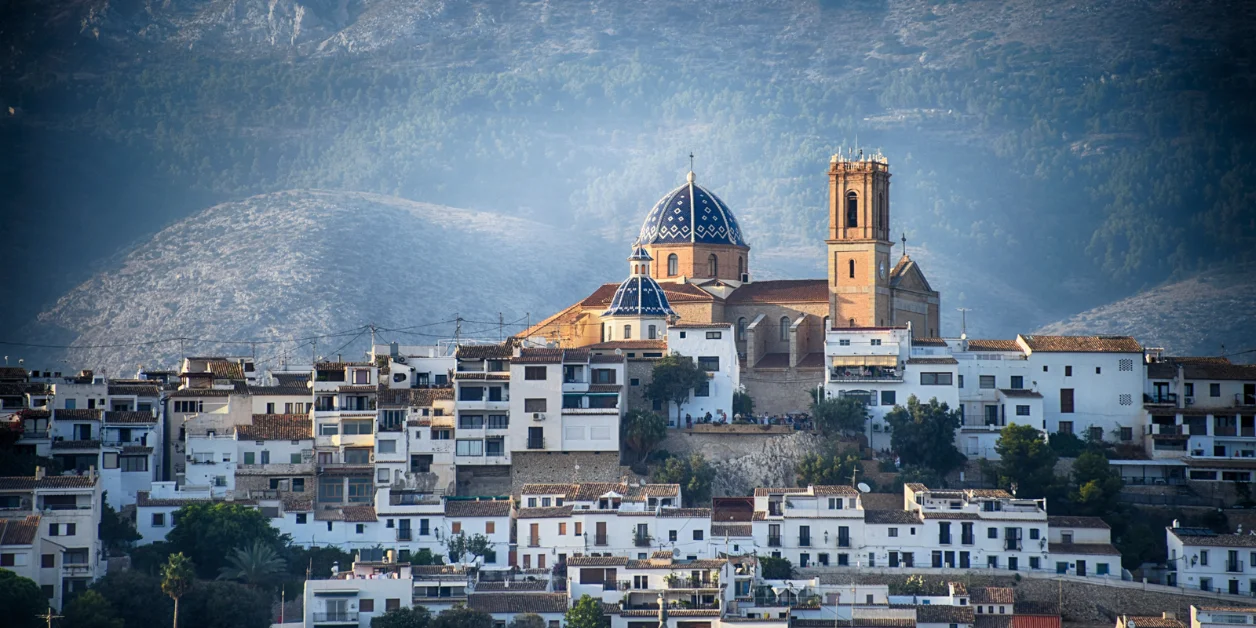Altea, Spain
Altea is a municipality in the province of Alicante, in the autonomous community of Valencia, on the Costa Blanca. It is known for its charming historic district with its church of the same color, Nuestra Señora del Consuelo, and its main street, Calle Mayor, flanked by modernist buildings and the typical white houses that characterize many of the Mediterranean cities.
Altea is also known for its cultural and artistic life. It has a large number of art galleries and museums as well as numerous festivals and cultural events throughout the year. The gastronomy of Altea is another major attraction, with great dishes such as Altea-style rice and Altea-style broth, as well as a selection of fresh fish and shellfish.
It is a member of the Association of the Most Beautiful Cities in Spain, a non-profit organization whose aim is to promote and preserve the cultural and natural heritage of Spanish cities. The cities that receive this award must meet a number of criteria, such as: B. A relevant historical and cultural heritage, an attractive natural environment and a diverse and quality tourist offer. Criteria that Altea far exceeds.
Beaches of Altea
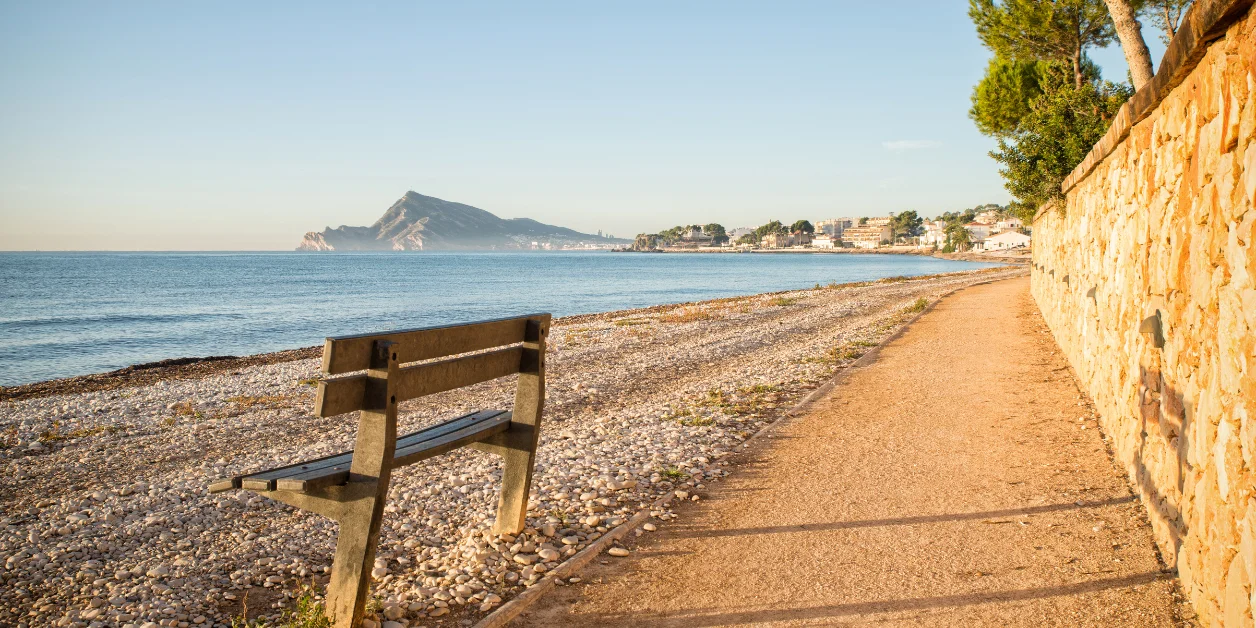
Altea has more than 8 km of coastline, alternating cliffs and small coves to enjoy the sun, take a swim, read a good book or explore the seabed.
Its most famous beaches are:
- The Cap Blanch Beach is the first beach in Altea that we found next to the Albir beach. Like the other beaches in Altea, it is a pebble beach. It has a blue flag, so we make sure the water quality is optimal. It has numerous restaurants in the area and pubs where you can enjoy the night life. Shortly after the beach itself we find a rockier section where locals usually fish. This section hides many details of the city's old life that few know, such as an old washhouse (Lavaderos in Sénia de Cana) or the sunken ruins of a Civil War bunker. If we continue this long walk, we come to Club Náutico and the port of Altea.
- La Roda Beach. Very close to the city center and with good accessibility, it attracts sports fans as it is a good place to practice water sports such as windsurfing, kayaking and diving, among others, as well as volleyball thanks to the nets on the beach.
- The Espigó Beach. It is the main beach of Altea as it is just in front of the town center and on the right side of the Algar river estuary. It's a shingle and pebble beach which, despite being Altea's main beach, is never crowded and fairly quiet. On its promenade, renovated at the end of 2022, we can find various restaurants, clothing stores, ice cream parlors and a magnificent view of the Peñón de Ifach in Calpe and of Albir. At the end of the beach, right where the eponymous breakwater is located, it connects to Cap Negret beach.
- The Cap Negret Beach, located on the left side of the Algar River Estuary, is easily one of the best beaches in Altea for its tranquility and for another difference: the stretch of beach is It is shallower and the pebbles are slightly smaller than the rest of Altea's beaches, so the bathing experience can also be more pleasant. This beach is also known for being behind the Hotel Cap Negret. You may be wondering about the name of Cap Negret (Black Cape in Valencian), because the name comes from the dark color of the rocks, coming from a volcanic outcrop of enormous scientific interest. Cala Soio and its surroundings are the best place to see this unique place on the Costa Blanca. Oh! And if on Cap Blanch beach we could see a sunken bunker, on Cap Negret beach we can see the ruins of another Civil War bunker right on the sea.
- The Playa de la Olla with a small island emerging 500m from the beach is another wonder of Altea. The famous Castell de l'Olla, a spectacular fireworks display that attracts more than 50,000 tourists every year, takes place here every year. At the end of l'Olla beach is the luxurious hotel complex Villa Gadea.
- In the foothills of the magnificent Sierra de Bèrnia and very close to the urbanization Altea Hills lies the Cala del Mascarat, where is also located the Marina of Campomanes and where you can find all kinds of water sports to rent jet skis, kayaks, paddle surf and much more.
And if you are an animal lover, Altea also has several beaches where dogs are allowed, which you can enjoy with your four-legged companion.
Old Town of Altea
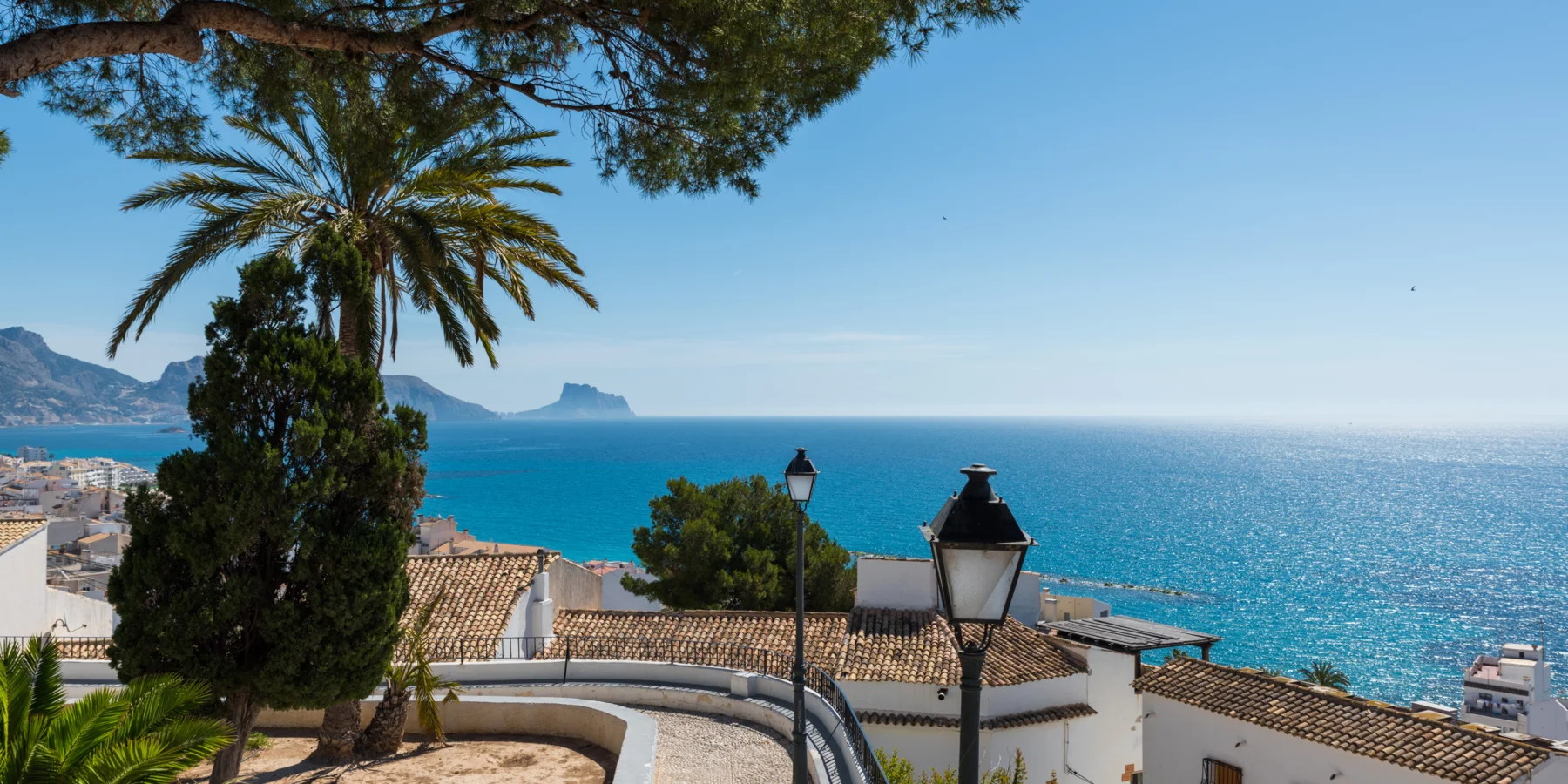
The old town of Altea is a visual delight with a charming atmosphere that breathes the magic of the Mediterranean, with its white facades and sidewalks made of stone seems that time stands still. It is easy to want to get lost in these streets where we will find different charming squares, restaurants with unbeatable views, craft stores, viewpoints with breathtaking views and of course the emblematic Church of Consuelo famous for its distinctive white and blue tiled dome that can be seen from several neighboring villages.
Buy a house in Altea
Buying a home is one of the most important and exciting decisions you will ever make. If you are considering the possibility of buying a house in Altea, Luxinmo is the right real estate agency, specializing in exclusive properties in this beautiful Costa Blanca town.
At Luxinmo you will find a team of highly qualified professionals with extensive experience in the real estate sector. We will help you find the house of your dreams in Altea, be it a villa with pool, an apartment with sea views or a house with countryside views.
Luxinmo not only offers you a wide range of properties, but also advises you throughout the purchase process, from the search to the signing of the contract.
Churches of Altea
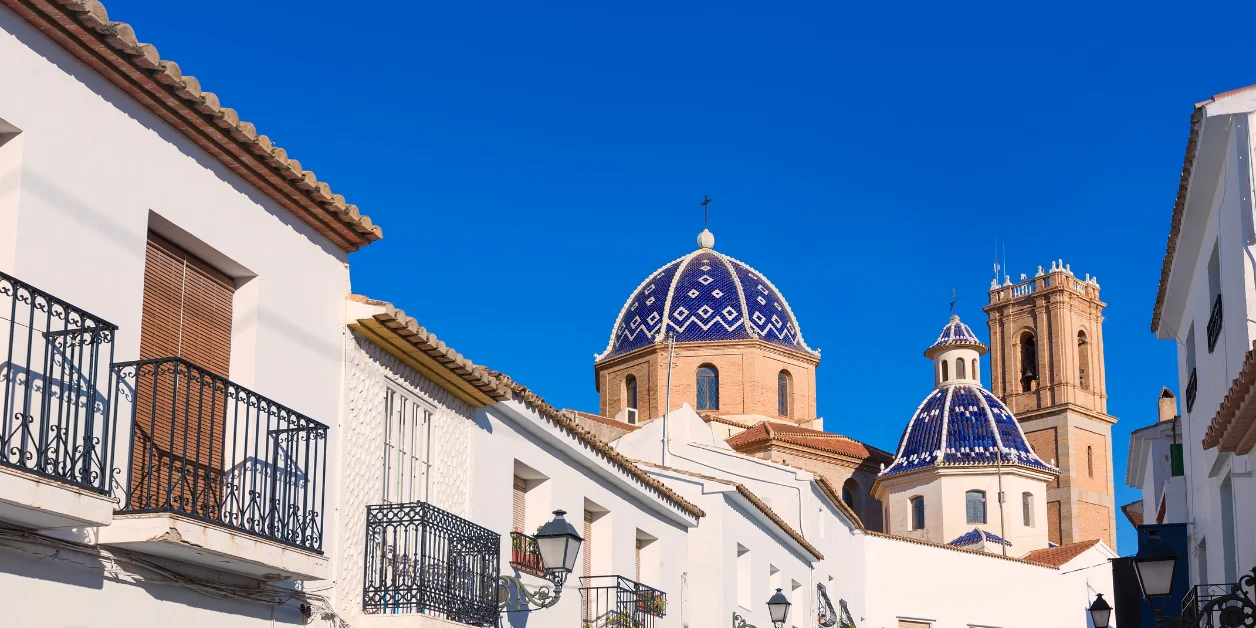
The first thing that comes to mind when we think of Altea is the famous blue dome of its church, which gives it the nickname the dome of the Mediterranean. But this is not the only church in Altea. Whether we are Catholics or simply love the architecture and history of these temples, Altea offers a list of beautiful churches and hermitages to see and visit.
- The most famous church is without a doubt the Church of Nuestra Señora del Consuelo, an impressive Gothic-style church located in the old part of town, in the Plaza de Church. This is the church with its famous blue domes that so many tourists have fallen in love with. The church was built in the 15th century and has been renovated several times over the centuries. It has an imposing tower and a facade decorated with sculptures and reliefs. In the square where it is located, there are restaurants, ice cream parlors, Mediterranean-style clothing stores and a spectacular viewpoint where you will surely want to take more than one picture.
- Church of the Convent of San Francisco. It is in the heart of the city, near the town hall and the beach. Built in the 18th century, the monastery and hostel were built with the contribution of the monks and the donations of some families. All that remains of this complex is the Church of San Francisco, which is a single-nave temple covered by a semicircular vault with added arches.
- Sant Roc Hermitage. It is located near the River Algar between the L'Horta and Quintanes areas. It was built in the 19th century and its celebrations take place in honor of San Roque on the first Sunday of August.
- Hermitage of Sant Lluis. Located near the Barranquet area, it is a small hermitage located on top of a hill with a beautiful view of Altea.
- Hermitage of Sant Tomás in Cap Negret.
- Hermitage of San Antonio de Padua and San Jaime, in Cap Blanch. Also known as the hermitage of Cap Blanc, it is located 2 kilometers from Altea in the direction of Benidorm.
- Parish of Santa Anna in Altea la Vella.
- We must not forget the Orthodox Church of Altea, whose real name is the Temple of Archangel Michael. It is the first Russian Orthodox Church built in Spain and is located near the Altea Hills urbanization, reachable from the N332 national road towards Calpe. Construction began on November 21, 2002 and, curiously, both the materials and the labor used in the construction of the church were entirely of Russian origin.
Golf Courses in Altea
A few minutes from the center of the old town, we have the opportunity to enjoy high quality golf courses in Altea that if you are a golf lover you cannot miss, open all year round, with very flexible schedules adapting to their customers. All of them have meticulous care to get the most out of every play. In addition, all of them offer restaurants with local cuisine and have tracks where the beauty of the views of both the mountains and the Mediterranean Sea can be highlighted. Do not miss the opportunity to play golf in one of the areas with the best climate!
Altea's Gastronomy
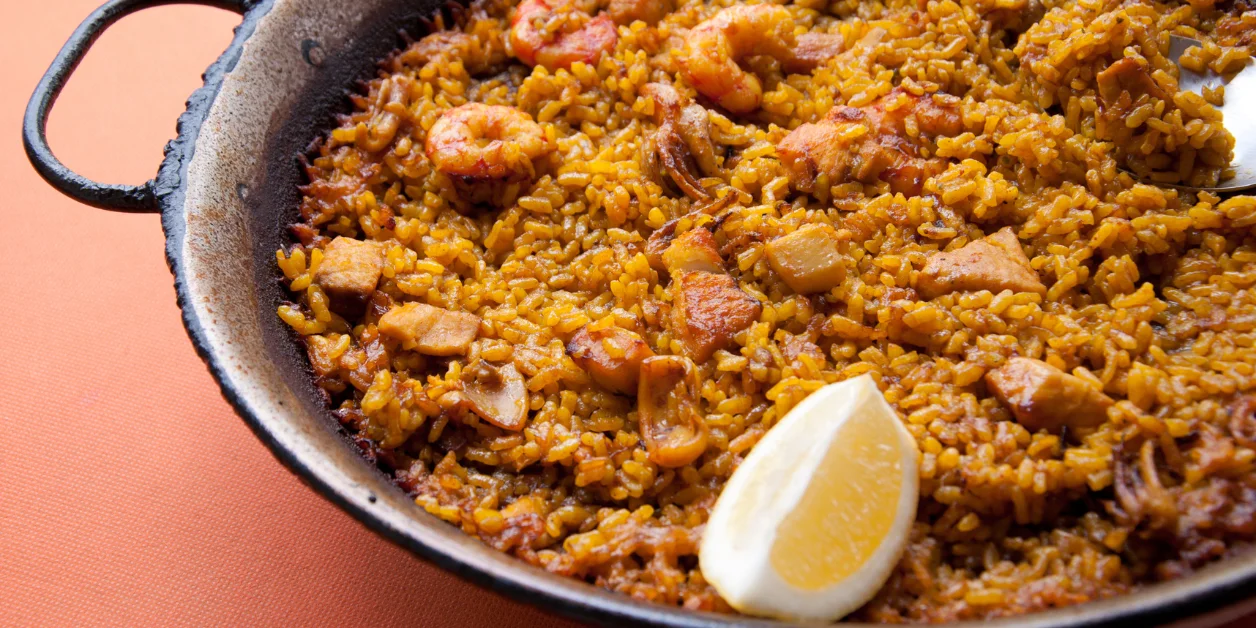
When we talk about Altea, its varied and delicious cuisine based on the Mediterranean diet certainly comes to mind. The gastronomy in Altea is very rich and the town hall organizes several gastronomic routes all year around in which various restaurants participate to highlight the typical and seasonal dishes and products. Rice, fish and products from the garden are the basis of Altea's gastronomy, the result of work and affection for its lands and its sea. If you ask us where to eat in Altea, the suggestions are endless. There are many quality restaurants in Altea where you can enjoy exquisite and tasty dishes in an incomparable setting, such as the promenade, the old town or the Plaza de la Iglesia, among others.
Fiestas of Altea
Here you can enjoy its festivals throughout the year, although most are concentrated in summer, among many others we have the Moros i Cristianos or for example those of San Lorenzo which are held between 10 and 13 August, that includes the night of the Castillo de la Olla, which manages to attract more than 50,000 spectators to delight them with a burst of light and gunpowder, an unforgettable party where the bay of Altea is the protagonist.
Altea la Vella and Altea in general are usually tranquil and peaceful, but that doesn’t mean you don’t get a chance to party. All year round, there are enough festivities to keep the spirits high.
Castell de l’Olla

Altea is probably most famous for a marvel of a festival that is Castell de l’Olla, which you can witness nowhere but here. It takes place on the Saturday closest to the day of San Lorenzo, August 10, and is a worldwide famous pyro-musical event which consists of a “castle” (hence the name – Castell) of fireworks being launched out into the sea, resulting in a stunning combination of light (its beauty doubled by the reflection in the water), gunpowder, and music. The show often includes a golden palm tree rising into the night sky. Over 50 thousand people come to watch it unfold every year, some of them sitting on the beach, some floating in rented boats for a better view. The event has very wholesome roots. It started out as a tribute to the local pyrotechnic Blas Aznar, “uncle Blai, the Rocketman”, who passed away over 30 years ago. The castle of fireworks is a gesture of utmost respect to this man, a way to honor his memory – and regale all spectators with miraculous beauty. The display is so famous, in fact, that people from all over Valencia, Spain, even Europe, come specifically to see it, and since the small town of Altea cannot house them all, special trains run that night from other cities close by, so that everyone can enjoy the party.
Easter
When Easter comes, the inhabitants of Altea hold solemn, somewhat macabre processions throughout the town during the Holy Week, which have a vivid dramatic flair to them. There is also a carnival beforehand, traditionally and symbolically representing the last chance to have some fun before Lent begins.
The pork festival (Sant Antoni del Porquet)
Speaking of Lent (or rather what we can permit ourselves in its absence), Altea has a special festival dedicated to pork. It shouldn’t be all that surprising, given how heavily pork features in Spanish cuisine, with the traditional hams hanging on hooks from bar-room ceilings, suckling pigs being the main course for celebratory meals and pigs’ tails or trotters being used to make hearty stew. Nothing goes to waste, every part of the animal is made good use of. The party takes place mid-February, and involves a parade through the old town at midday, after which everyone shares a hearty rice dish, sings folk songs and dances, and, finally, gets to taste delicious roast pork, the ultimate star of the show, so to say.
Encontes
From 15th to 20th May, an amazing possibility to get more intimately familiar with Spanish culture presents itself in the form of the Oral Narration Festival, Encontes, a celebration of the ancestral art of storytelling. There are dozens of events arranged, entertaining the lucky visitors with tales and songs. Anyone, kids and adults alike, will find something that satisfies their taste.
Moros y cristianos
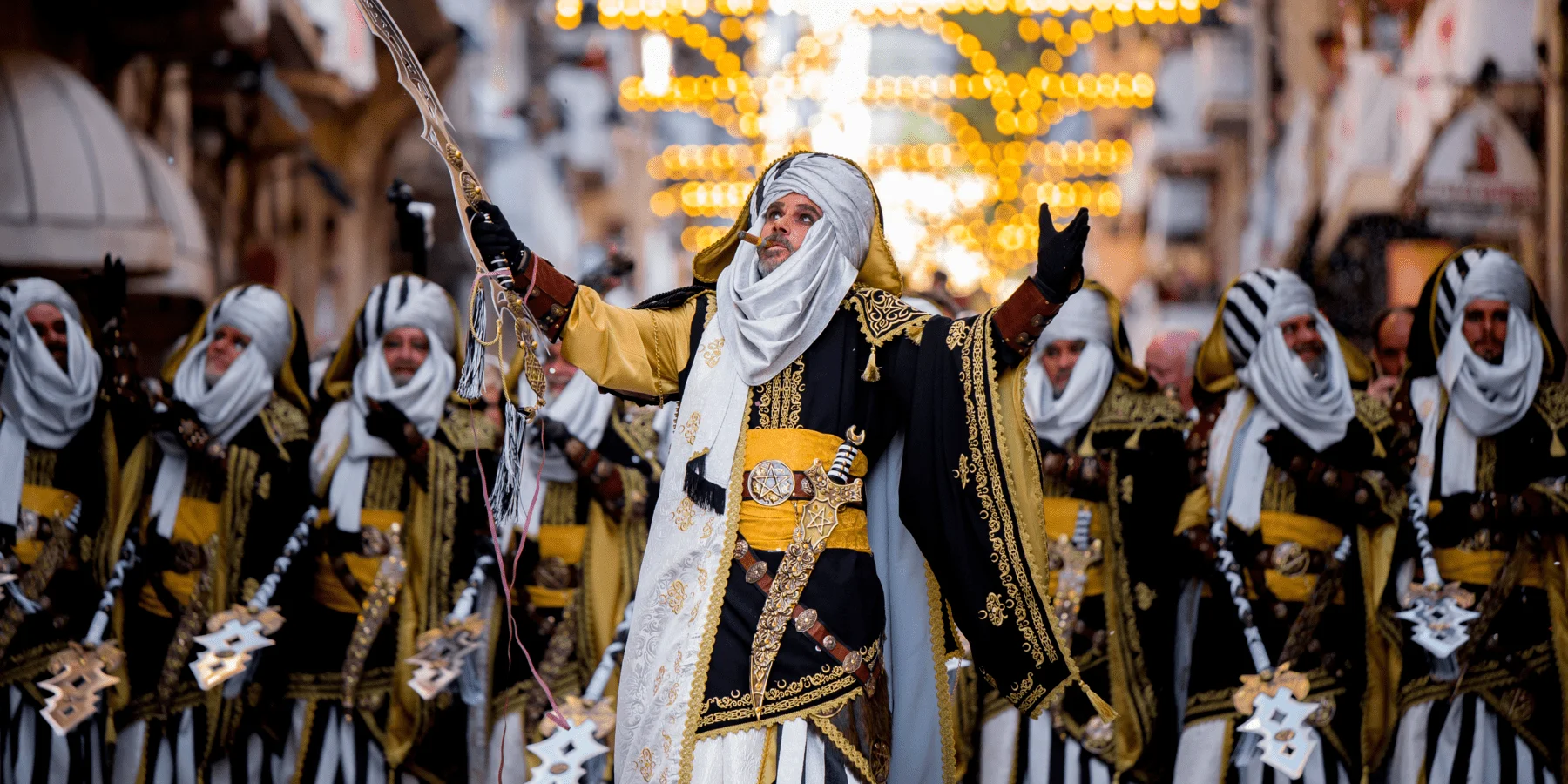
Now, here is probably the most spectacular festival of them all.
Every year, many Spanish towns participate in a symbolic war between the Moors and the Christians to commemorate the 500-year Moor rule over much of the territory that nowadays constitutes Spain and its end in the 15th century in the course of the Reconquista. The Reconquista consisted of a series of campaigns by Christian kingdoms to recapture the territories they once lost to the Moors. The word Moors was used by Europeans in the Middle Ages to refer to the Muslims inhabiting the Maghreb, the Iberian Peninsula, Sicily, and Malta. The festival lasts several days, and is supposed to represent the city falling into the hands of the Moors only to be won back. The fourth weekend of September, on Friday, the festival begins with a peal of bells and a cannon fire. The townsfolk are divided into groups, “cosplaying”, if you will, as the two sides of the conflict, and enact running battles in the old town and on the beach. Other than fights, the festival features parades with pompous costumes loosely inspired by Medieval fashion. Those who play the Christians ride on horses and wear fur, metallic helmets, and armor. They have arquebuses at their disposal, which they fire loudly and proudly. Conversely, those who became Moors for the weekend ride camels or elephants and wear ancient Arab costumes. It is truly something incredible and captivating to behold.

